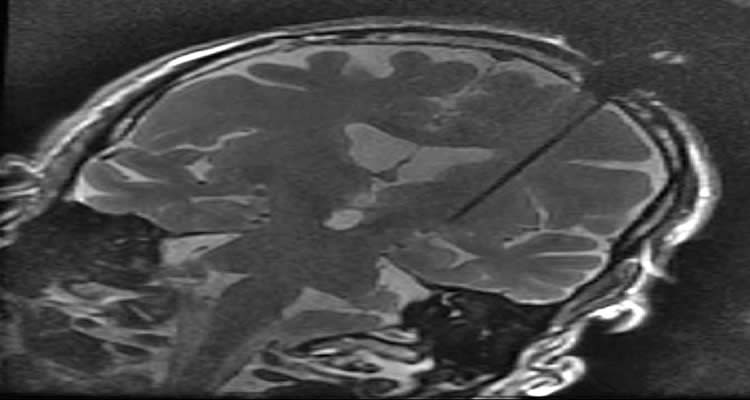Neurosurgeons at UC San Diego Health System are the first in Southern California to implant a deep brain stimulator (DBS) in a patient with Parkinson’s disease using real-time 3-D magnetic resonance image (MRI) guidance.
Parkinson’s disease is a progressive disorder of the nervous system that affects movement. Symptoms include shaking, slowness of movement and difficulty walking. These unpredictable movements are caused by abnormal nerve cell activity in the brain. DBS therapy, like a heart pacemaker, transmits electrical signals to help restore normal activity.
Traditionally, DBS surgery is conducted while the patient is awake, and under pain management. This approach allows surgeons to continuously monitor the patient’s brain function and to ensure accurate placement of the device.
“Now, for some patients, this surgery can be performed in the MRI suite under general anesthesia so that a patient can sleep during the placement of the DBS electrodes,” David Barba, MD, director of functional neurosurgery, UC San Diego Health System. “Within a few days of DBS therapy, many patients can resume life’s everyday activities.”
“Placing a DBS device while a patient is awake can be exhausting for the patient due to the length of the procedure and the need to perform neurologic testing in the operating room,” added Clark Chen, MD, PhD, director of stereotactic and radiosurgery, UC San Diego Health System. “Fortunately, with continuous real-time MRI monitoring, we can now place the electrode in a safe location that provides maximal neurological benefit while the patient is under the comfort of general anesthesia.”
Bob S. Carter, MD, PhD, professor and chief of neurosurgery, and co-director of the UC San Diego Neurological Institute said the collaborative endeavor introduces a new technology strategy to improve the care of patients with Parkinson’s and other diseases.

“Our capacity to perform these procedures will be further enhanced in the new A. Vassiliadis Family Hospital for Advanced Surgery at Jacobs Medical Center which opens in 2016,” said Carter.
DBS can also be used to treat other movement disorders, including dystonia, essential tremor and obsessive compulsive disorder. It is in clinical trial testing as treatment for depression.
Contact: Jackie Carr – UCSD
Source: UCSD press release
Image Source: The image is adapted from the UCSD press release






